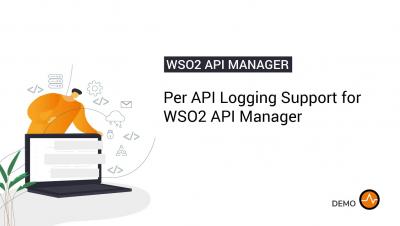Systems | Development | Analytics | API | Testing
May 2022
One-Time Authorization Code for REST APIs in WSO2 Identity Server
WSO2 Identity Server provides many identity management workflows and password management workflows out of the box, e.g., self-registration, user invitations, password recovery, etc. However, it is not unusual to come across a situation where the workflow capabilities provided out of the box in the product, is not sufficient to fulfill your business requirement.
Re-issue Existing Password Recovery Confirmation Code in Followed Recovery or Resend Requests
Photo by Micah Williams on Unsplash This article discusses a new feature which will be released for the public distribution of WSO2 Identity Server 5.12.0. This feature was developed to overcome the following scenario: You can refer to the following diagram for a deeper understanding of the above flow. This scenario can be experienced by anyone. As such, we introduced a new way to handle this scenario (as shown below) for the notification based password recovery flow.
WSO2 Completes $93 Million Series E Growth Funding Round with the Investment from Info Edge
Adding authentication to your Express JS application #Identityin15
WSO2 Identity Server and its Key Features
Photo by Tima Miroshnichenko from Pexels
How to Plug an Existing User Store into WSO2 Identity Server?
Are you someone who already has a legacy system in place and wants to migrate to a modern authentication system with Identity and Access Management (IAM) features? The first thing you need to consider is how you can use the existing legacy user store with this new system. Keep in mind that if the legacy user store uses an old security mechanism to store your data, we would recommend that you migrate to the WSO2 JDBC user store format or Active Directory (AD).
Virtusa Is Now a Global Systems Integrator for WSO2
Proof of possession for OAuth2 tokens(DPoP) with WSO2 Identity Server #Identityin15
Eliminating Password Burden: Introducing Asgardeo Passwordless Authentication
Have you ever found passwords to be extremely inconvenient? In a developing world, you've been using older technology?
WSO2 API Manager 4.1 Release Webinar
Delivering Value from Developers to CxOs
Recent events over the past two years have shown that delivering enhanced digital experiences is critical for business success. The ability to innovate fast is now the differentiating factor that determines whether a business is a leader or a follower.
Performance optimization techniques used in Asgardeo - Part 02
This is the second installment of the series. As a result, if you haven't yet completed Part 01 of the series, it is highly urged that you do so first. According to the official website, Asgardeo is an IDaaS that allows developers to create seamless login experiences in minutes. Let's concentrate on the performance optimization approaches utilized in react and webpack in this article.
Expose SOAP Service as REST API Using WSO2 API Manager
Audit Logging for Micro-Integrator
Performance optimization techniques used in Asgardeo - Part 01
This post explains the approaches we used to improve performance in our application. This knowledge will also assist you in applying these strategies to your projects as required. Please keep in mind that this post series focuses solely on the front end. According to the official website, Asgardeo is an IDaaS that allows developers to create seamless login experiences in minutes.
Composing Effective Consumer Onboarding Workflows, Part 1
Consumer onboarding is one of the, if not the most, important functions of a customer identity and access management (CIAM) solution. An overly complicated onboarding workflow significantly detracts from the consumer experience. Providing an effective, engaging and efficient onboarding workflow without compromising security has always been a challenge among security and risk professionals.
Composing Effective Consumer Onboarding Workflows, Part 2
In part 1 of this series, we introduced the three most common abstract workflows based on the method in which they are initiated. But what makes an abstract workflow a concrete workflow are the different types of components that make up the workflow. In this article, we will take a look at these components.
Per API Logging Support for WSO2 API Manager
The Future of Passwordless Authentication
Do you recall what your first password was? It was probably something easy that you could remember easily, such as your birthdate or the name of your pet. However, as you created additional online accounts, your passwords grew more complex and difficult to remember. It's a problem that many people face. As a result, many of us tend to reuse passwords across many accounts, exposing our personal information to theft.














